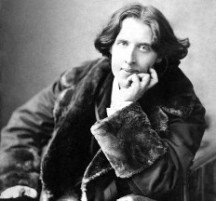Emily Brontë
The English novelist Emily Brontë (1818-1848) wrote only one novel, "Wuthering Heights." A unique achievement in its time, this work dramatizes a vision of life controlled by elemental forces which transcend conventional categories of good and evil.
Emily Brontë was born in Thornton on Aug. 20, 1818, the daughter of an Anglican minister. She grew up in Haworth in the bleak West Riding of Yorkshire. Except for an unhappy year at a charity school (described by her sister Charlotte as the Lowood Institution in Jane Eyre), her education was directed at home by her father, who let his children read freely and treated them as intellectual equals. The early death of their mother and two older sisters drove the remaining children into an intense and private intimacy.
Living in an isolated village, separated socially and intellectually from the local people, the Brontë sisters (Charlotte, Emily, and Anne) and their brother Branwell gave themselves wholly to fantasy worlds, which they chronicled in poems and tales and in "magazines" written in miniature script on tiny pieces of paper. As the children matured, their personalities diverged. She and Anne created the realm of Gondal. Located somewhere in the north, it was, like the West Riding, a land of wild moors. Unlike Charlotte and Branwell's emotional dreamworld Angria, Gondal's psychological and moral laws reflected those of the real world. But this did not mean that she found it any easier than her sister to submit herself to the confined life of a governess or schoolmistress to which she seemed inevitably bound. When at the age of 17 she attempted formal schooling for the second time, she broke down after 3 months, and a position as a teacher the following year proved equally insupportable despite a sincere struggle. In 1842 she accompanied Charlotte to Brussels for a year at school. During this time she impressed the master as having the finer, more powerful mind of the two.
The isolation of Haworth meant for Brontë not frustration as for her sister, but the freedom of the open moors. Here she experienced the world in terms of elemental forces outside of conventional categories of good and evil. Her vision was essentially mystical, rooted in the experience of a supernatural power, which she expressed in poems such as "To Imagination," "The Prisoner," "The Visionary," "The Old Stoic," and "No Coward Soul."
Brontë's first publication consisted of poems contributed under the pseudonym Ellis Bell to a volume of verses (1846) in which she collaborated with Anne and Charlotte. These remained unnoticed, and Wuthering Heights (1847) was unfavorably received. Set in the moors, it is the story of the effect of a foundling named Heathcliff on two neighboring families. Loving and hating with elemental intensity, he impinges on the conventions of civilization with demonic power.
Brontë died of consumption on Dec. 19, 1848. Refusing all medical attention, she struggled to perform her household tasks until the end.
Further Reading
Elizabeth Gaskell, The Life of Charlotte Brontë (2 vols., 1857), is a basic source. Charles W. Simpson, Emily Brontë (1929), is reliable and incorporates subsequently revealed material. See also Muriel Spark and Derek Stanford, Emily Brontë: Her Life and Work (1953).
Old London Bridge - Only for Poets

Connecting the Poets who digging heart of me Still death - Sabarnasri
HEARTY WELCOME & HAVE A NICE STAY

This work is licensed under a Creative Commons Attribution-Noncommercial-No Derivative Works 2.5 India License.
Subscribe to:
Post Comments (Atom)













No comments:
Post a Comment